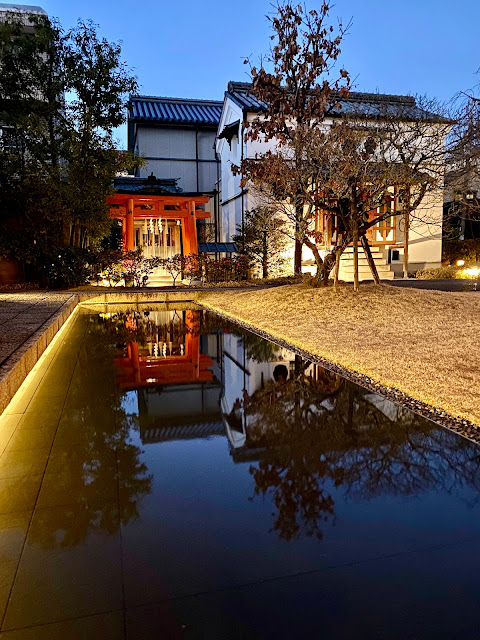After visiting Taiwan, my parents and I went to Kyoto for a few days, our first ever time in Japan. It was fascinating to see where certain aspects of Taiwanese culture originated. Every place is unique, but Japan almost didn't feel like Asia. The small neighborhoods with quaint houses and extremely clean streets with sidewalks with no curb almost felt European. The sidewalk traffic was not as politely orderly as in Taiwan, but maybe because we were constantly forgetting to walk on the left.
 |
| Visiting the Giant Buddha of Nara, a temple complex roamed freely by deer |
 |
| Arashiyama Bamboo Forest |
 |
| Kinkaku Temple, covered in gold leaf |
 |
| Ending the biking day at a nice teahouse with traditional desserts |
 |
| New Year's miso soup with mochi balls |
The next day, we went to Kiyomizu-dera, the most striking temple complex of the trip. To reach the temple at the top of a hill, you walk up winding cobblestone streets (including one claiming to be the most beautiful in all of Kyoto) packed with tourists in kimonos and vendors selling snacks and souvenirs.
Attending a Japenese tea ceremony was radically different than drinking tea in China or Taiwan. Part of the experience is the aesthetics of the flowers and the painting chosen for decoration in the tatami mat room. The tea leaves are ground into a powder called matcha, whereas Chinese tea is the leaves steeped and then filtered out. The tea is drunk from bowls rather than cups, and there is an emphasis on purity, or everything being clean. Since being in Taiwan, I'd already become obsessed with matcha so I enjoyed every tea, ice cream, crepe, cream puff, waffle, mochi, cocktail I could find in matcha flavor.
 |
| Kodai Temple |
For dinner, we had kaiseki, a traditional meal of small courses, at Roan Kikunoi, my first ever two Michelin star restaurant. It was a spectacular feast. The first course was a small saucer of sake with gold flakes. It did feel very different than Western haute cuisine. There were quite a few cold, mushy dishes--as my mom said, even in Taiwan after having too much mochi and boba, Westerners like more crunch. A lot of emphasis was placed on the aromas, the variations of umami flavors, and how the handcrafted pottery paired with the dishes.
The next day, we hiked all around the one-of-a-kind Fushimi Inari shrine. The tunnels of red tori were stunning to walk through in person; just like the bamboo forest, there was a special ambiance that couldn't be captured in photos.
As we decided to hike all the way to the summit all the other tourists disappeared. We ended up following an abandoned path through a cemetery (where my dad managed to suddenly get lost) down the backside of the mountain to another temple, this time in the middle of a private residential community.





































No comments:
Post a Comment